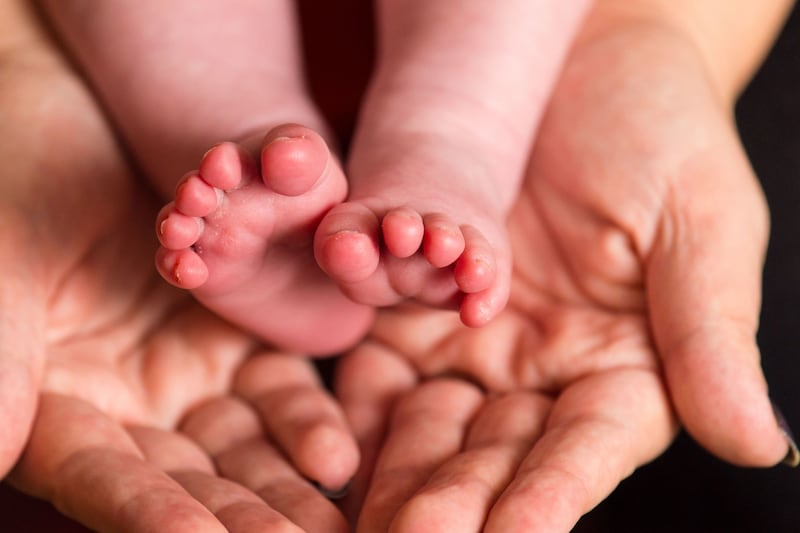ALTHOUGH up to a quarter of pregnant women in the UK have a caesarean birth, the procedure is still surrounded by questions and myths.
Are women who have an elective C-section really just 'too posh to push', making it the easy way out? Is having a caesarean always traumatic? And does going under the knife to give birth mean you'll have to have a caesarean for every subsequent birth?
After having two caesareans herself, author Clare Goggin felt there was a need to answer such questions and discuss C-sections from a pregnant woman's point of view. So after speaking to hundreds of women who'd experienced a caesarean, plus doctors and midwives, she wrote the book Why Caesarean Matters.
She says: "Caesarean birth is a complex and controversial topic, about which there are so many opinions that are so fiercely held, that pregnant women and new mothers can feel completely at sea.
"I wrote Why Caesarean Matters because I felt we rarely look at caesarean birth through the eyes of the people who actually give birth this way, which can lead us into some very important misunderstandings that simply frustrate and undermine pregnant women and new mothers."
Here, Goggin debunks some of the most common caesarean myths:
1. Caesarean birth is 'birth gone wrong': In recent years, awareness campaigns have tried to increase understanding about how women's bodies work in pregnancy and birth, and on helping birth unfold as straightforwardly as possible, says Goggin.
"However, there's also increasing recognition that there are many paths to a positive birth, and calls for greater recognition of the importance of women's voices in decision making. When a woman feels confident caesarean birth is right for her, based on her individual circumstances and/or preferences, it is absolutely birth gone right."
2. Caesarean births are the 'easy way out': Goggin says the "sexist nature" of this myth becomes clearer when thinking about what caesarean birth entails – major abdominal surgery, the kind that would ordinarily mean resting for at least six weeks.
"When I speak to women who've given birth by caesarean, they consistently tell me this is the most frustrating and hurtful myth about caesarean birth. It implies birth should be difficult, and that there's some moral benefit to women suffering as they bring new lives into the world," says Goggin.
"We don't tend to call other forms of surgery 'easy'. In reality, caesarean birth is different for everyone – some recover quickly and feel grateful to give birth this way, and others find recovery much harder and can struggle with ambivalent or negative emotions about their births."
3. Writing a caesarean birth plan is pointless: Because caesarean birth is a surgical procedure, many women assume there's little they can do to personalise their experience, explains Goggin. "Caesarean birth has been more often associated with cold, clinical surgical practices than with life-affirming rites of passage," she says. "But in reality, there are many possibilities you might wish to discuss with your caregiver."
These might include asking your caregivers to lower the surgical drape so you can watch your baby emerge, or asking your birth partner to video or take photos of the baby being born. You might choose music to be played in theatre, request the lights are dimmed as the baby's born, and/or ask to hold the baby as soon as possible.
4. Caesarean births are always traumatic: A planned caesarean birth hasn't been shown to increase the likelihood of postnatal depression or PTSD compared to a planned vaginal birth, stresses Goggin.
"I've met many women who experienced their caesarean births as traumatic, and many who experienced their caesarean births as magical," she says. "The same is true of vaginal births. Often the differentiating factor is the way they're treated by those around them, and the care and compassion they receive if they have a complicated clinical situation."
5. You can't meet your baby straight away: Goggin says in many cases not only can you meet your baby immediately, but you can watch their moment of birth.
"An increasing number of healthcare professionals will offer to lower the drape as your baby emerges from the womb, and the operating table will be tilted slightly so you can see," she says. "Many will also offer you the opportunity to hold your baby straight away."
6. You can't breastfeed if you have a caesarean: If women get the right support after birth, women who give birth by C-section are just as likely to breastfeed as women who birth vaginally, reassures Goggin.
"There's an abiding perception that if you've given birth by caesarean, you either can't breastfeed or you shouldn't get your hopes up," she says.
"However, the evidence tells us something different - it says women who give birth by caesarean are less likely to start breastfeeding in the first few hours after the birth, but, when breastfeeding is established, they are as likely to continue as women who have a vaginal birth."
7. Once a caesarean, always a caesarean: Women who've had a previous caesarean birth have a higher chance of complications in future births, but Goggin says key health organisations agree that planning a vaginal birth after a previous caesarean can be a safe choice for many women.








